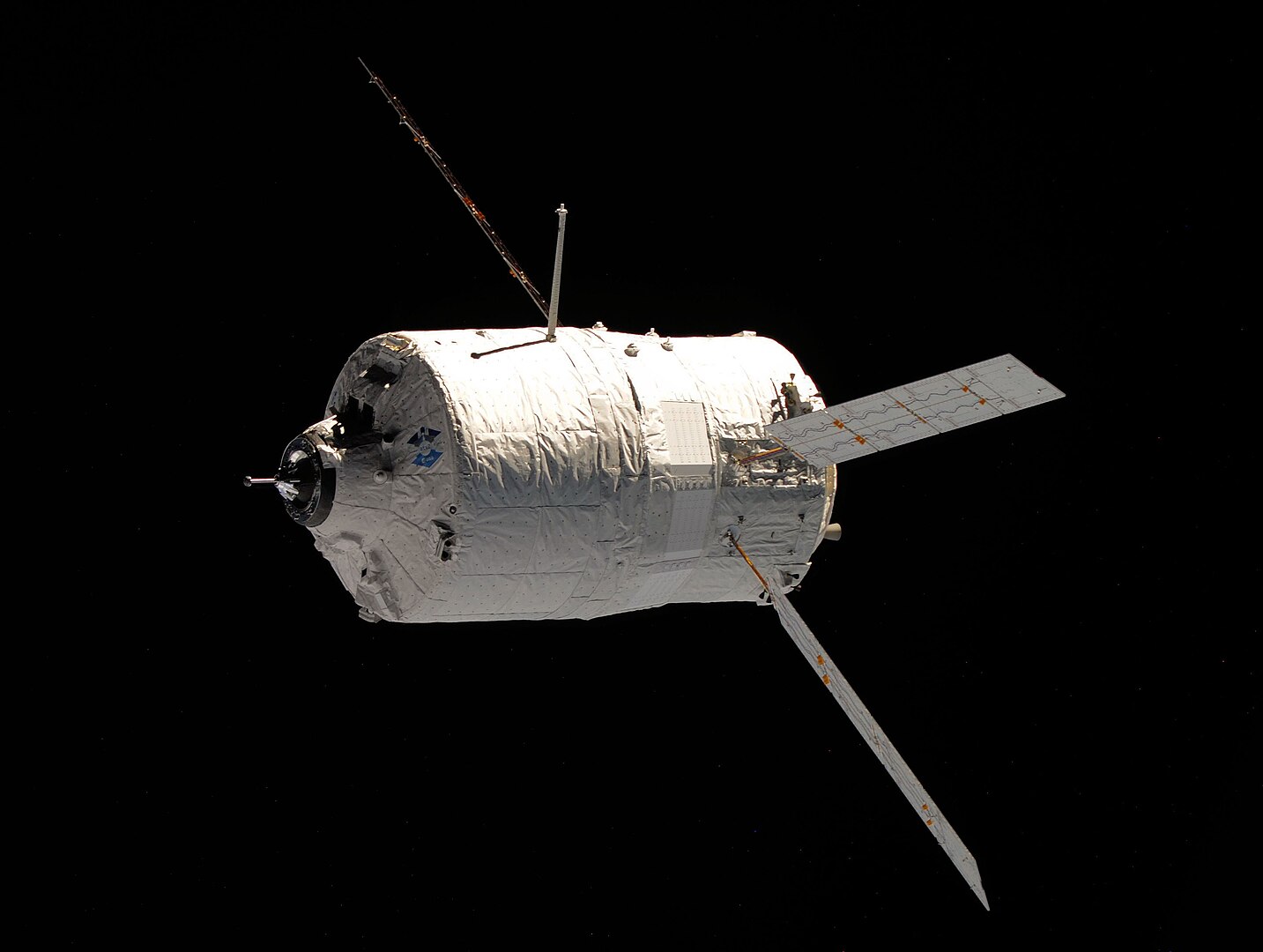
Automated Transfer Vehicle (ATV)
In-active Cargo Cargo Resupply Payload Capacity: 7667 kg Diameter: 4.5 m Height: 10.3 m()
March 9, 2008
Cargo Earth Orbit Logistics
Flight Life
Six months when docked
Description
In terms of its role, the ATV was designed to complement the smaller Russian Progress spacecraft, possessing three times its useful payload capacity. Similar to the Progress, it would carry both bulk liquids and relatively fragile freight, which would be stored within a cargo hold maintained at a pressurized shirt-sleeve environment in order that astronauts would be able to access payloads without the need to put on spacesuits. The pressurized cargo section of the ATV was based on the Italian-built Multi-Purpose Logistics Module (MPLM), which was a Shuttle-carried "space barge" that had been previously used for transporting equipment to and from the Station. Unlike the MPLM, the ATV used the same docking mechanism as employed upon the Progress. The ATV, like the Progress, also serves as a container for the station's waste. Each ATV weighs 20.7 tonnes at launch and has a cargo capacity of 8 tonnes.
History
During the 1990s, as the International Space Station program was taking place, it was collectively recognised by the 15 participating nations that, upon completion, the International Space Station (ISS), a crewed space station in Low Earth orbit (LEO), would require regular resupply missions in order to meet the needs of the onboard crew as well as to deliver apparatus to support the various scientific tests that would be performed on board. In October 1995, it was agreed that, amongst the various contributions to the ISS program that Europe would assume responsibility for under the vestiges of the European Space Agency (ESA), would be the Automated Transfer Vehicle, or ATV; this logistics-orientated spacecraft would perform the identified resupply missions to ISS.
Electron
Symphony In The Stars
Rocket Lab Launch Complex 1B - Rocket Lab Launch Complex 1, Mahia Peninsula, New Zealand'Symphony In The Stars' is the first of two dedicated missions on Electron to deploy a single spacecraft to a 650km circular Earth orbit for a confid…
Falcon 9
Starlink Group 10-34
Space Launch Complex 40 - Cape Canaveral SFS, FL, USAA batch of 27 satellites for the Starlink mega-constellation - SpaceX's project for space-based Internet communication system.
Electron
Get The Hawk Outta Here (4x HawkEye 360)
Rocket Lab Launch Complex 1A - Rocket Lab Launch Complex 1, Mahia Peninsula, New ZealandHawkEye 360 is a a space-based civil global intelligence satellite network using radio frequency (RF) technology to help monitor transportation acros…
Falcon 9
Starlink Group 10-16
Space Launch Complex 40 - Cape Canaveral SFS, FL, USAA batch of 27 satellites for the Starlink mega-constellation - SpaceX's project for space-based Internet communication system.
Falcon 9
Axiom Space Mission 4
Launch Complex 39A - Kennedy Space Center, FL, USAThis is a Crew Dragon flight for a private company Axiom Space. The mission will carry a professionally trained commander alongside three private ast…
Falcon 9
Transporter 14 (Dedicated SSO Rideshare)
Space Launch Complex 4E - Vandenberg SFB, CA, USADedicated rideshare flight to a sun-synchronous orbit with dozens of small microsatellites and nanosatellites for commercial and government customers.
Atlas V 551
Project Kuiper (KA-02)
Space Launch Complex 41 - Cape Canaveral SFS, FL, USAProject Kuiper is a mega constellation of satellites in Low Earth Orbit that will offer broadband internet access, this constellation will be managed…
Falcon 9
Starlink Group 10-23
Space Launch Complex 40 - Cape Canaveral SFS, FL, USAA batch of 27 satellites for the Starlink mega-constellation - SpaceX's project for space-based Internet communication system.
Long March 3
ChinaSat 9C
Launch Complex 2 (LC-2) - Xichang Satellite Launch Center, People's Republic of ChinaKu- and Ka-band geostationary communication satellite for China Satcom at 92.2° East, replacing ChinaSat 9.
Angara A5/Briz-M
Kosmos 2589
35/1 - Plesetsk Cosmodrome, Russian FederationUnidentified payload for the Russian military.

